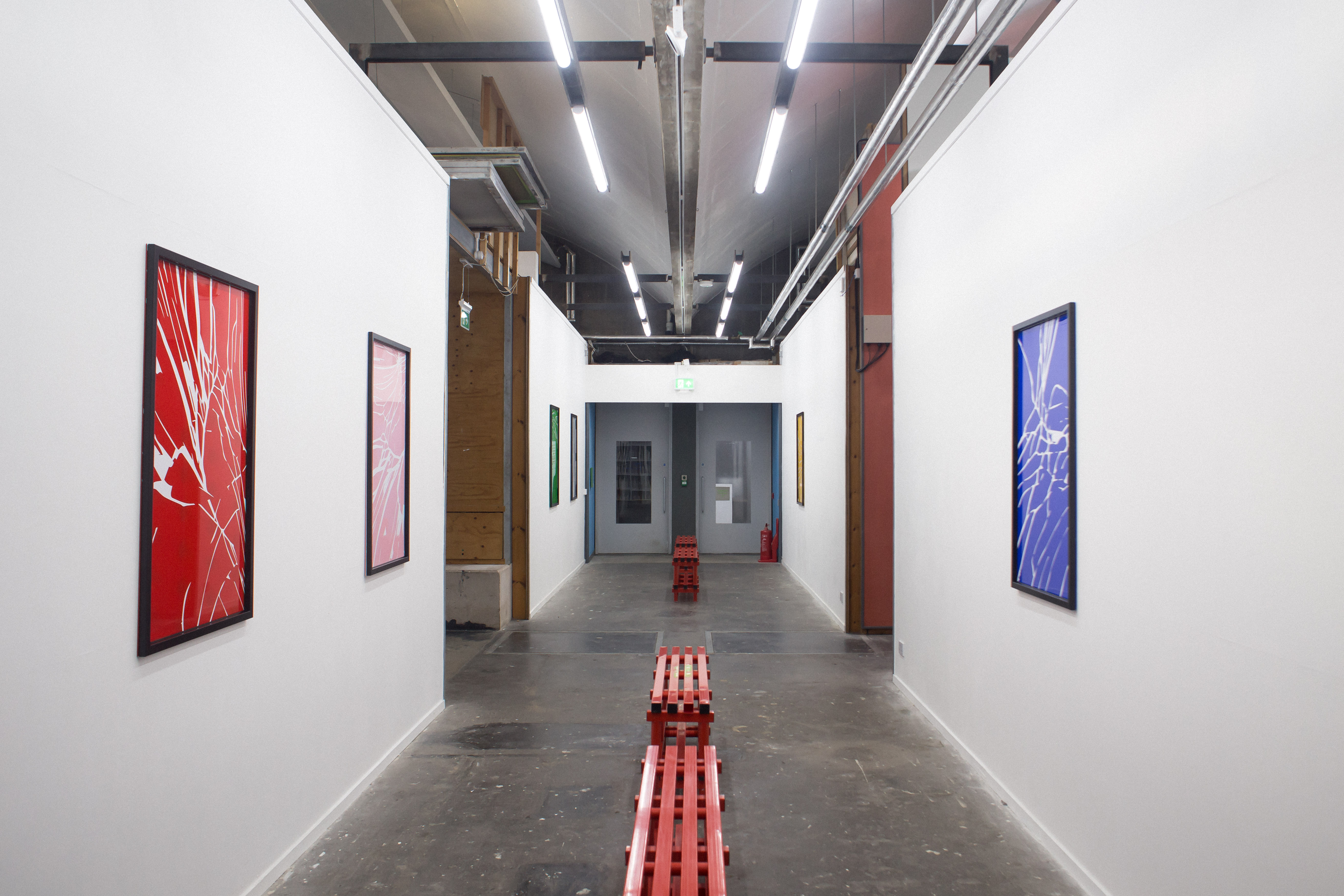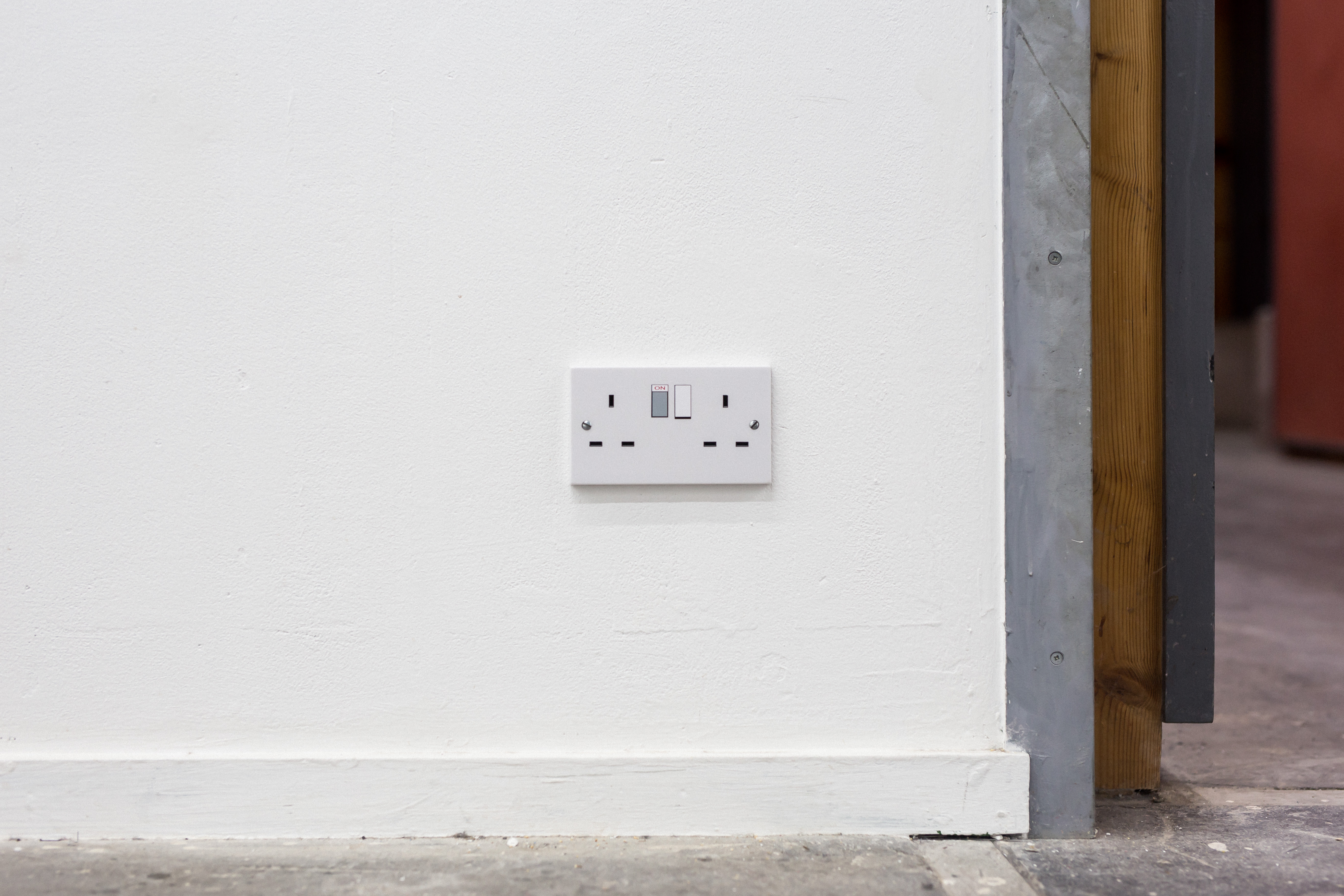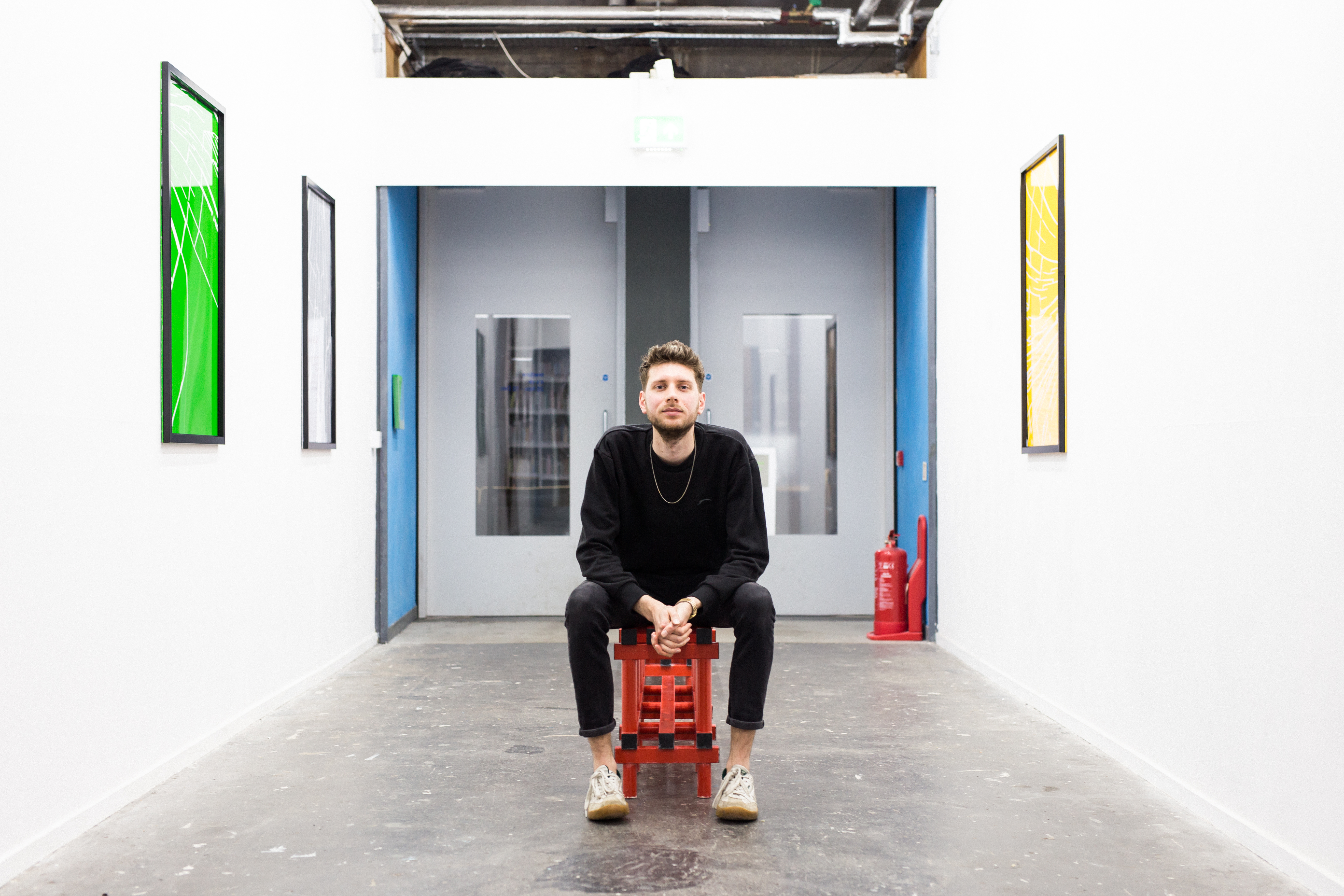Jack Lewdjaw
Interview by Jaf Yusuf
-
Published in April 2020
-
As an art teacher I keep coming across quotes from artists of the last century referring to their dreams, this feels like something we artists don’t talk about anymore. To begin where we all begin the day, what dreams do you wake up from?
I don’t usually remember my dreams. My most recent, memorable, dream was from a time at school. A quick google tells me that this means ‘I’m anxious about my own abilities’, or that I might have a ‘long term project that I hope to be accurate’. I guess that’s a good introduction to being an artist...
Thinking about it, I enjoy those moments when you are reminded of a dream later that morning, when an action, object, or character from the dream suddenly steps into your reality and the dream floods back.
I worry that the mechanisms of the artworld and the rigours of being an artist remove much of the dreaming and dreams from it. Perhaps the age of dreamers is over, that we might postpone dreams instead for proposals. I always have a question that nags at me however, the question of hope, an against all odds, naive, yet willful hope. Perhaps that is where I dream.
 Fotocopias, risograph print, 2019
Fotocopias, risograph print, 2019I wanted to ask, how do you work? For me the image of a painter in their studio doesn’t fit with your work but I could be wrong. Where does it start?
Broadly speaking, it seems to me that artists fit into 1 of 2 categories. 1, the ‘hands’ artist who works through a material and potentially produces lots of work, selecting the best of it to keep on with, or to show (often studio based). 2, the ‘head’ artist who thinks about their work, only making physical when the time seems right, or with the help of others (not necessarily studio based). These are messy descriptions (and if Liam Gillick has taught me anything; it’s that there is always a third way) but hopefully they have something to them. If they do exist, I definitely fit into the latter. It’s interesting that the first category seems to be the one that has captured the imagination of the public more, and is the type of artist that we see most clearly referenced in books and film, perhaps because those processes are more visual, and it's hard to make someone hunched over a laptop exciting (although watch Hackers (1995) where I think they make a good go of it). As an aside, these artists almost always seem to be monied and live in loft apartments in NYC, but I’m yet to see that fortune appear personally (see Hannah and Her Sisters (1986) & House of Cards (2013)).
My phone has become a useful tool to me in order to record a kind of visual diary. Recent bodies of work that have looked at the city environment have felt most obvious to capture with my phone camera, and I’m particularly drawn to photographing signage and shopfronts, and things that are broken. I also use the notes section of the phone to scribble sketches and write down ideas as I have them. The internet becomes a useful tool for sourcing imagery, typefaces, and vectors and I particularly like using these elements when they are free to download, or are available so that anyone can rent or buy for use.
I do now have a studio, I’m still working out what I will use it for...
Then it seems to be about the use of time in making and thinking, how those two might affect each other and what comes before the other. This leads me to ask you what has influenced you to work with the tools and materials that you do?
At times I work as a graphic designer, and I think this has influenced my work considerably. Not that my work necessarily consists of graphic design, but that I have tried to apply some similar methodologies of working, sensibilities about colour, composition, text, and also trying to pull these ways of thinking through to 3D work, video and installation. This influence also links to the administration involved in the artistic process, the emails sent, and the applications written, the desk work.
More recently, I have started working with coloured acrylic plastic, I like to think about acrylic similarly to a backlit computer screen, as it exposes a vividness and flatness of colour that I have never been able to achieve with paint, or found in another media. This way I can approach the medium as I would a blank document, represented by a field of colour. I frequently use vinyl in combination with the acrylic. The vinyl is machine cut into designs from vector Adobe Illustrator files and then applied onto the surface of the acrylic. The Illustrator files are ones that I have created or adapted, and in that process I think I’m probably trying to deal with a mistrust of my own hand (in getting it to do what I want), or a middle ground for the ‘perfect’ and clinical elements that the computer can produce, attempting to get the computer to replicate drawn ideas. It's also probably why I referred to capturing my ideas as scribbles rather than drawings
Like the graphic design methodologies you mentioned, your work often materialises in a series, there is repetition or sequence in colours. I want to know more about this in individual works?
Well it’s definitely something I’m focussing on more and more, but it actually still feels quite new to me. I’m still getting to grips with what this means for my work, but I like the fact that when you choose certain materials or colours they can aid themselves well to a series or permutations of similar images. The acrylic plastic that I use has a finite range of colours so I was interested in the idea that the material limits the palette I can draw on, just as when designing I will often limit my palette. The ‘Broken painting’ series (2017) was created with the idea of a specific exhibition space and specific sizing in mind, and I enjoyed working with that goal, like setting myself my own brief. The works themselves came out of an often asked question from my mum (#ArtMumsOfTheWorldUnite!); what would it look like if I made paintings again? It felt very appropriate to think about paintings in the terms of making a series. They reference a number of different ‘breakages’, from iphone screens, to bus shelters and shop windows. More broadly this speaks about my interest in decay and ruination, and how we respond to the different architecture we inhabit and project our futures onto it.
 It’s Ok, installation view, Spike Island, Bristol, 2017
It’s Ok, installation view, Spike Island, Bristol, 2017There are so many things we could talk about here, shoutout to #ArtMums! I think what makes me so drawn to the ‘Broken painting’ series is that there is a big contrast between decay and ruination and the outcomes of your works, these moments of ‘breakages’ feel captured and contained. I would really like to know more about your interest in decay and ruination?
I used to spend quite a long time worrying about the direction my artist statement had taken me in, and indeed anything I had written about my work. I found that rather than being generative or fruitful, it became massively limiting to what I could imagine and began to stagnate. This was around mid 2016. I felt like there were works that I was ignoring making because I didn't feel I could reconcile them to my previous works, and so it was at this point that I decided to cut loose and just try making rather than think about it too much. The broken paintings were definitely a result of this period. I allowed my making to dictate my interests and research, and I began to notice a trend towards the broken and redundant in some of the works.
Whilst a handful of my work more obviously references urban objects and infrastructure, others perhaps do so more subtly, and I’m not keen to pin it down too much. The focus then is a referencing of the breakdowns of yesterday as the building grounds of tomorrow.
Speaking of tomorrow, I’m pretty into trompe-l’oeil murals, the type that you see in cities in France and that replace blocked out windows or even entire walls where a street ends, and some of my works have explored that fascination. I like that these murals project architecture or situations that aren’t actually there but influence the makeup of the street. Often they show some kind of illustrated community harmony or history that isn’t necessarily otherwise present in the area. They are aspirational to an extent, and position themselves between nostalgia and hopefulness for the future. I’ve produced a number of trompe-l’oeil plug sockets that acknowledge the fact that plug sockets always seem very hard to come by in gallery spaces, and are never positioned where you want them when you do. With this in mind I should acknowledge that my work often feels like a path of least resistance, in that I want the work to be succinct or reduced, and often the simplest idea is the one I go with, that this might become helpful to their agency.
To come back to your question about outcomes, yes I suppose the works actually have quite a polished and defined finish to them, which might seem at odds with my thinking about breakages. I think I’m trying to get at what contemporary living might mean to me and not so hidden flaws in the environments and surfaces we are part of.
 Trompe-l'oeil plug sockets, plastic socket cover, decals, 2017
Trompe-l'oeil plug sockets, plastic socket cover, decals, 2017It’s so interesting how our own artist statements, the broader expectations we put on ourselves and what we think others expect of us can affect our ability to make; I think what you’re saying is very relatable.
I feel like our recent exhibition ‘Mad as Map’ took your practice in a slightly different direction, one of format with Mona Lisa staring back at us. It made me think about the journey and layers that particular icons had to travel to arrive there, to be hung on chains and lit in neon. Is the medium the message (Mcluhan)?
Yes I think you’re right that the exhibition pushed me on a step in my work. I presented three works as part of that show, and each one I hope is a starting point for things to come. The work you refer to ‘Happy place’ (2019) is a neon sign that co-opts the image of the Mona Lisa, pared down to the facial features; eyes, nose, and mouth. This image actually derives from an adult colouring book of famous artworks, a line drawing that I obtained and vectorised to form the design for the neon. The neon is presented as a sign hung on a black acrylic plate, suspended from plastic chains. The work considers the public ownership of Mona’s image and a journey it takes from colouring book to vector to neon. The title plays with the French name for the Mona Lisa; La Joconde, a pun on the sitter’s name (Lisa del Giocondo) meaning the happy or jovial one. Calling the work ‘Happy Place’ then suggests the work as a potential location, and this is referenced in its presentation as a sign. I was thinking particularly of neon signs in bars, the kind that animate and wink at you.
 Happy Place, neon, acrylic, carabiners, chains, 2019
Happy Place, neon, acrylic, carabiners, chains, 2019Also presented was ‘Piazza’ (2019) which is a reclaimed and anagrammed shop sign. The lettering, which I got hold of from the owner of a closed down shop opposite where I live, has been given a new future by the simple action of anagramming, the new word ‘Piazza’ being selected as one that potentially and loosely encapsulates romance or location, and many other things.
 Piazza (annagrammed sign #1), recliamed and annagrammed shop sign, 2019
Piazza (annagrammed sign #1), recliamed and annagrammed shop sign, 2019Finally, ‘Border 1’ (2019) is a 2D work which incorporates a pattern based on a border design available from one of the earlier Microsoft Word packages. I’m interested in how we use these borders to present work or documents, and where the border styles are drawn from (antiquity, classicism, baroque, modernism), and how this relates to a history of design in brief. In turn these elements are adopted to add weight to something, to position it somehow within this history.
 Border 1, acrylic on vinyl, 2019
Border 1, acrylic on vinyl, 2019These descriptions are helpful insights into my practice and ways of thinking, although it feels like there's loads more I could say as I think about each piece. Your comment about layers I think speaks of my interest in formats, of drawing things through to new configurations, I hope that this is playful and is reflected in my use of bold often primary colours.
Let's now look ahead, what’s next on the path? Is there anything you would like there to be?
In my head I’m working towards a solo show, and I have begun making some trial pieces for various series of work. Whilst my current concerns are a number of 2D works, I’m interested whether 2020 will also see me making sculpture… I’ve been thinking lots about architecture, housing, and architectural models so look out for those possible influences in the months to come. In particular unbuilt architectural proposals that project a possible other or future that never happened.
This will of course be whilst balancing my role as co-director of east bristol contemporary (ebc), and as part of that co-ordinating the ebc Night School. Linking to my previous thought, I am constantly wondering about how my interests and involvements in education and alternative learning might respond to the physical works I am creating, and how the two things are intertwined.
That sounds great. At the time of writing this (January) it is an important time for artists. It’s when lots of opportunities are publicised, deadlines are put in calendars and the relative dead zone of January gives us time for contemplation. I wonder what you think about the labour of being an early career artist (if I’m allowed to call you that.) A lot of the time we work for free and balance it with other labour, what keeps you going?
Applications, applications, applications. Yes you’re right September and January are the busy ones aren’t they? Summer’s a no go.
A friend of mine once said to me “Who doesn’t want to be an artist? It’s the best thing to do, isn’t it?”

It’s Ok, installation view with the artist, Spike Island, Bristol, 2017
-
Jack Lewdjaw (b.1990 Loughborough) is an artist and educator who lives and works in Bristol. He is also Co-Director of east bristol contemporary. He is currently a participant in Syllabus V: a peer led alternative learning programme run in partnership with, Wysing Arts Centre Cambridge, Eastside Projects Birmingham, Spike Island Bristol, The Newbridge Project Newcastle, Invia London, and S1 Sheffield.
Recent exhibitions include: MAD as MAP, News of the World, Deptford (2019) open/closed, SERF, Leeds (2018); it’s ok, Spike Island Testspace, Bristol (2017); East Midlands Today, Two Queens, Leicester (2017); eeeeeeeee, CBS Gallery, Liverpool (2017); EBC Bomb Factory Takeover, The Bomb Factory, London (2016); Future Late, Tate Modern, London (2016); Platform, Modern Art Oxford (2013).
-
jacklewdjaw.com
@lewdjaw_jack
-
If you like this why not read our interview with Evy Jokhova
-
© YAC | Young Artists in Conversation ALL RIGHTS RESERVED
